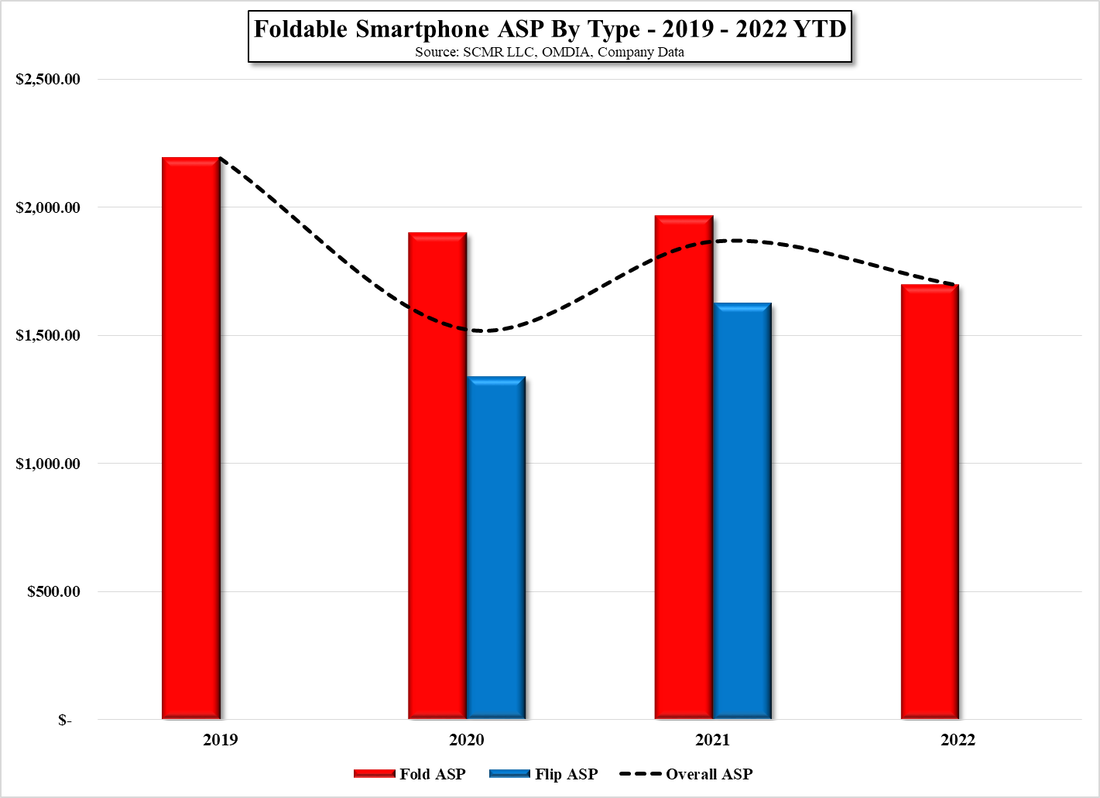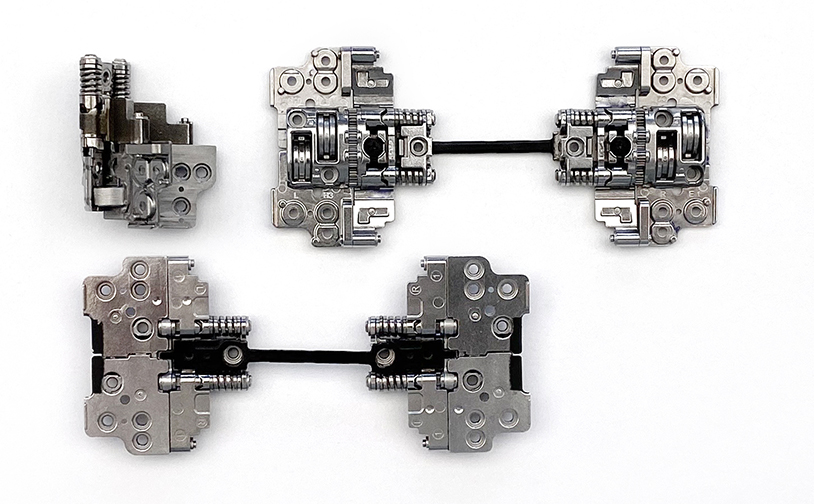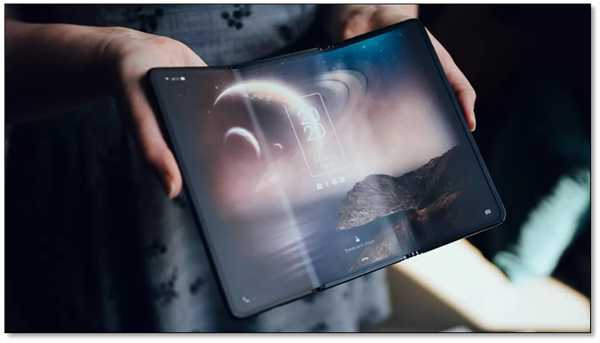Foldables… in China
Foldable smartphones have created a ‘new’ feature category that continues to grow from its onset in 2019, and as the technology continues to improve, should continue to grow and capture premium pricing. At this relatively early stage in the smartphone foldable market, there are few brands and relatively few offerings as can be seen in Figure 1 with Samsung (005930.KS) the dominant brand and among the category’s biggest supporter given its semi-captive display supplier Samsung Display (pvt). That said, China’s Huawei (pvt) has also been a competitor and has been gaining global share as it continues an active foldable release schedule that rivals Samsung's, and newer Chinese foldable entrants, such as Oppo (pvt), Vivo (pvt), Xiaomi (1810.HK), and Honor (pvt), have recently entered the market with their own offerings.
Logic holds that Samsung’s dominant share of the foldable smartphone market, which has been as high as 95% in some periods, is going to decline as more entrants eat away at that customer base, but nowhere is that more evident than in the world’s largest smartphone market, China, where Samsung is a relatively small player overall. While the Chinese smartphone market is experiencing the same unit volume contraction that is seen globally (Figure 2 & Figure 3), domestic brands still maintain a trend line share of ~85% (Figure 4) and according to data from Counterpoint Huawei is the dominant foldable smartphone brand in the domestic Chinese market. (Figure 5) currently, while Samsung’s Mainland share has declined from 25% to 15% since the beginning of the year.
As the number of foldable smartphone offerings both globally and in China is still quite small, share calculations are very dependent on the timing of new releases and at least a portion of Samsung’s smartphone foldable share decline in China can be attributed to both its and Huawei’s release schedules. Huawei released its latest foldable, the Xs2 in April, a full size foldable, and the P50 Pocket, a lower priced clamshell foldable last December, while Samsung’s last offerings (Galaxy Z Fold and Galaxy Z Flip) were released in August of last year, so while Samsung’s foldable China share will likely continue to decline as local competition increases, we would expect to see some share improvement when the new line of Galaxy foldables is released in August.
As noted, the Chinese smartphone market remains domestically brand loyal, with some of that loyalty a reaction to the US trade sanctions against Huawei and ZTE (000063.CH) that have stymied their growth outside of the Mainland, however the foldable smartphone market is new and additional display suppliers and brand offerings will become available over the next few years with the potential for Apple (AAPL) to enter the foldable market in 2024 or 2025, which will have considerable influence over share, as in new release quarters, the iPhone can have a dominant share both globally and in China. While there is considerable speculation about Apple’s foldable plans, we expect Apple is far more interested in developing a foldable that would not require the user to compromise on display quality and would provide some more specific device functionality (triple-fold, scroll, etc.), rather than to join the foldable market just to be competitive.
All of that said, we believe the real test for the foldable smartphone market is functionality, as we expect the foldable premium currently available to smartphone brands will evaporate relatively quickly as more foldable panel suppliers enter the market, particularly China’s BOE (200725.CH) who has been a foldable display supplier to Huawei and has shown a wide variety of foldable prototypes and demos over the last year. BOE will compete with primary smartphone foldable panel supplier SDC by offering a comparable product at a lower price, as it has in almost all of its other display segments, eventually forcing SDC to use its foldable production experience to generate new form factors that will increase the appeal of foldables to consumers. We don’t consider foldable devices to worth a premium unless they provide functionality over existing smartphones, so while we expect the category to continue to grow, we expect the novelty to wear off and premiums to evaporate unless smartphone brands can utilize ‘foldability’ to create devices that radically improve the customer’s experience.














 RSS Feed
RSS Feed